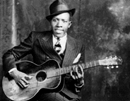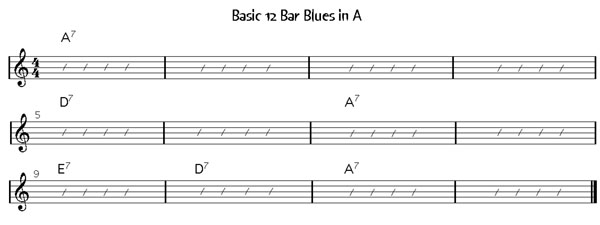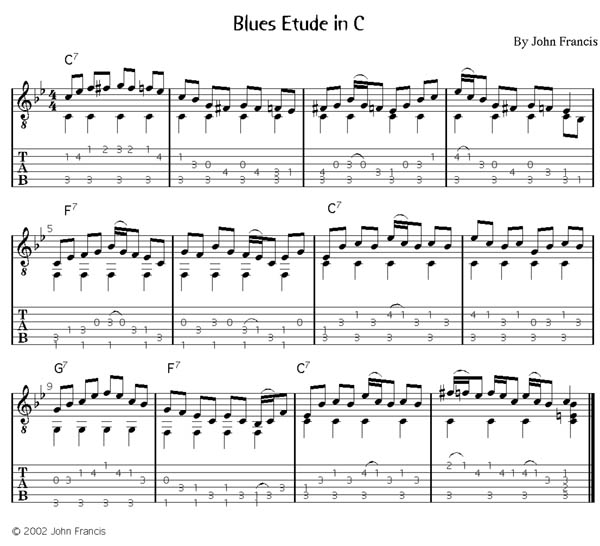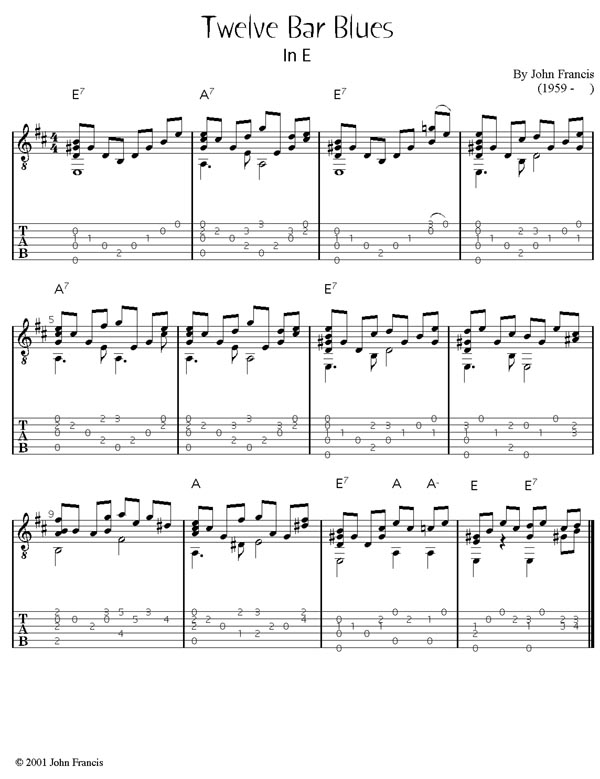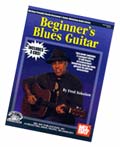 |
Beginner's Blues Guitar by Fred Sokolow
|
|
$24.50 - Book & 3 CD Set 98506BCD (Includes TAB) |
|
Starting from ground zero, Fred Sokolow teaches you how to accompany yourself while singing the blues. You'll learn to play melodies and solo in several keys, throughout the neck. This book will help build the foundation for your understanding of blues guitar techniques and styles for both acoustic and electric guitar. Addresses the simple blues form in E,G, and C, gradually expanding on concepts. Includes simple first position blues scales needed for soloing (both fingerpicking and flatpicking) in the keys of E,G, and C. Songs and solos are presented in standard notation and tablature with lyrics. Includes 3 CD's. Overall Difficulty: Beginning. 48 Pages.
|
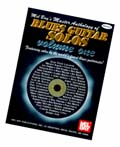 |
Master Anthology of Blues Guitar Solos Volume One
|
|
$28.95 - Book & 2 CD Set 98424BCD (includes TAB) |
|
This comprehensive book/CD set presents some of the first contemporary blues guitarists! Features Muriel Anderson, Duck Baker, Mickey Baker, Carlos Barbosa-Lima, William Bay, Larry Bolles, Ben Bolt, Dan Bowden, Dix Bruce, Mike Christiansen, Alan de Mause, Craig Dobbins, Steven Eckels, Jim Ferguson, Buddy Fite, Tommy Flint, John Griggs, Stefan Grossman, Ole Halen, Al Hendrickson, Roger Hudson, Jean-Felix Lalanne, Paul Lolax, Larry McCabe, Dale Miller, Franco Morone, Ronald Muldrow, Paul Musso, Bill Piburn, Bucky Pizzarelli, Paul Rishell, Vincent Sadovsky, Felix Schell, Jerry Silverman, Martin Simpson, Fred Sokolow, Stanley Solow, Tim Sparks, John Standefer, Jay Umble, Phil Upchurch, Paul Yandell and John Zaradin. These selections include both new pieces and some of the best previously published pieces from the latter half of the 20th century. Standard notation and tablature are offered for most of the pieces, along with a biographical sketch of each performer. A set of 2 CDs is included, making this an ideal sourcebook for serious students and professionals alike. Overall Difficulty: Intermediate-Advanced. 232 Pages.
|
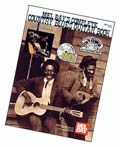 |
Complete Country Blues Guitar Book by Stefan Grossman
|
|
$28.95 - Book & 2 CD Set 94710BCD |
|
Over 50 fingerpicking guitar solos in notation and tablature in country blues, Delta blues, ragtime blues, Texas blues and bottleneck styles. An extremely comprehensive blues solo collection. 2 CD's included. Overall Difficulty: Beginning-Intermediate. 260 Pages.
|
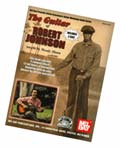 |
The Guitar of Robert Johnson taught by Woody Mann
|
|
$24.50 - Book/CD Set 20911BCD (Includes TAB) |
|
It was rumored that Johnson sold his soul to the devil and this is what gave him the power to play the blues so well! Here, Woody Mann has carefully prepared this three CD series to describe and illustrate many of Robert Johnson’s amazing guitar techniques and musical ideas. Includes the tunes: ‘Kindhearted Woman Blues’, ‘Me and the Devil’, ‘Hellhound on My Trail’, ‘Ramblin’ on My Mind’, ‘Crossroad Blues’ and ‘Terraplane Blues’. For intermediate to advanced guitarists; all in standard notation and TAB. Overall Difficulty: Intermediate. 24 Pages.
|
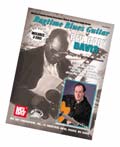 |
Ragtime Blues Guitar of Rev. Gary Davis taught by Stefan Grossman
|
|
$24.50 - Book & 3 CD Set 99464BCD (Includes TAB) |
|
Rev. Gary Davis was a musical giant. His ideas spanned a wide range of techniques and styles. His repertoire featured blues, rags, show instrumentals and gospel songs. He played with his thumb and index finger to pick out complex melodies, rhythmic licks and lightning fast single-string runs. In this book, seven of Rev. Davis's blues are presented. These arrangements have been performed and recorded by a host of great artists including Bob Dylan, Taj Mahal, Hot Tuna, David Bromberg, John Renbourn, Bert Jansch and many others. These lessons are for the intermediate to advanced fingerstyle guitarist. The accompanying three CD lessons teach these arrangements phrase by phrase as well as presenting the original recordings.
LESSON ONE: Our first lesson highlights two of Rev. Davis's most popular blues arrangements. Hesitation Blues is played in the key of C. Baby, Let Me Follow You Down is played in the key of G.
LESSON TWO: The key of C was a favorite for Rev. Davis. In this lesson we explore the party tune Sally Where'd You Get Your Liquor From (made popular by Hot Tuna). Rev. Davis used to joke that he could play Candyman so many different ways that he would be able to play it nonstop for at least 8 hours without repeating himself! We look at two versions of this very popular folk blues with the regular Candyman followed by the Two-Step Candyman.
LESSON THREE: "Raggin' the blues" was a great part of Rev. Davis's repertoire. His Walkin' Dog Blues is a tour de force in a blues in C. All fourteen verses are transcribed here, and we study how this arrangement develops. Buck Rag is a fascinating rag played in the key of C. Single-string runs, counterpoint lines, rhythmic variations and syncopated bass patterns are featured. Overall Difficulty: Intermediate - Advanced. 40 pages.
|
More Blues Guitar Music - Here -
|
Coming Soon - A Definitive Work:
Twelve Bar Blues In All Twelve Keys by John Francis
Book HS100901, Heartside Publishing
Unique solo guitar arrangements, written to provide guitarists with a deeper understanding of the blues in its most common form, in all keys, not just the common ones. Includes performance notes and pedagogical material. Transposition is covered, but the emphasis is on original solo works in each key. All levels can benefit from this offering. To Be notified of official release send email to: heartside@sologuitarist.net
|
|
